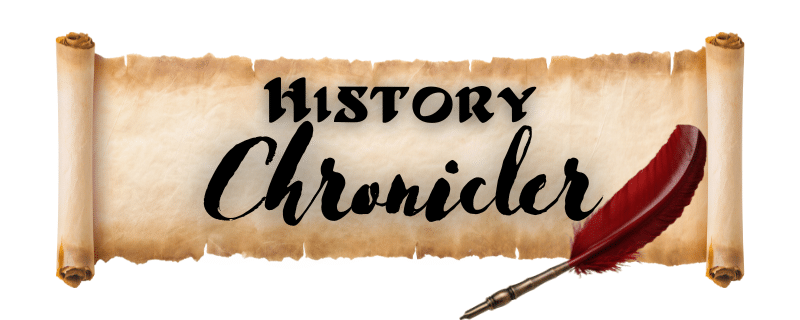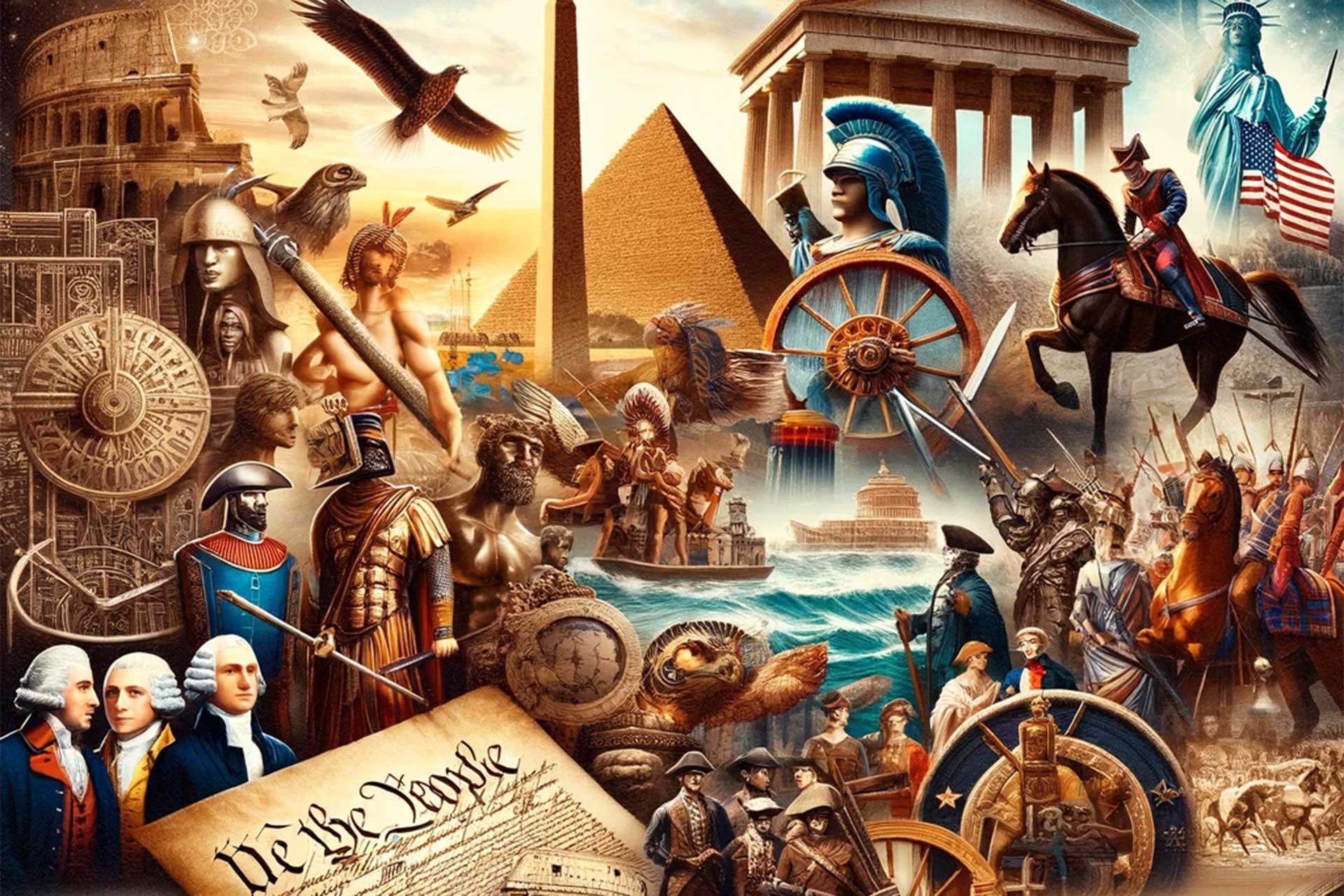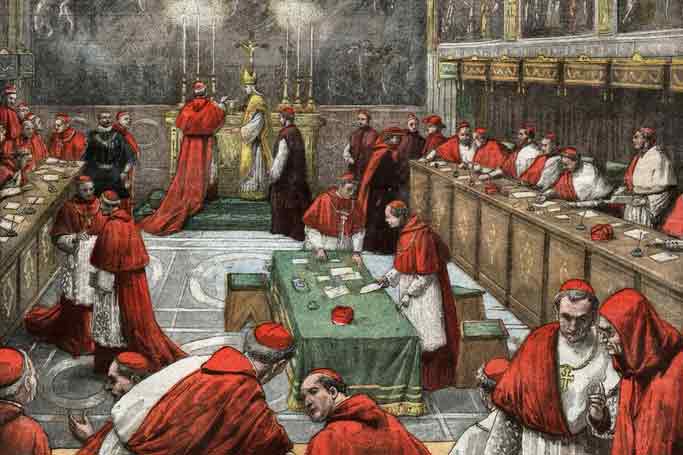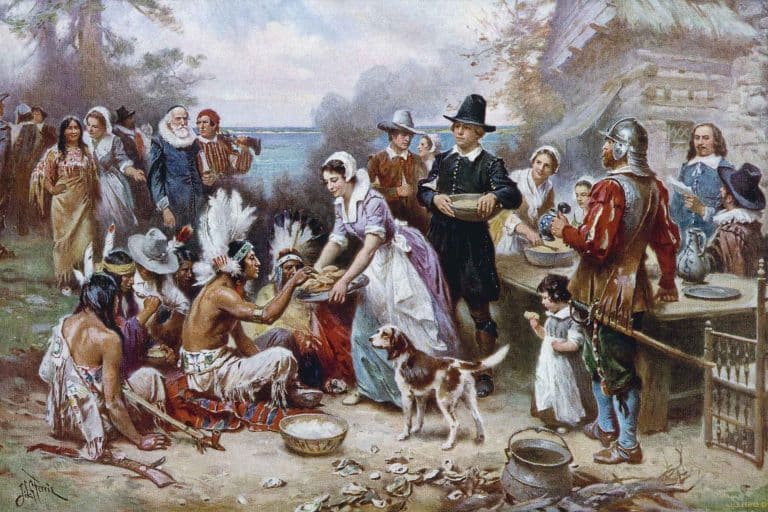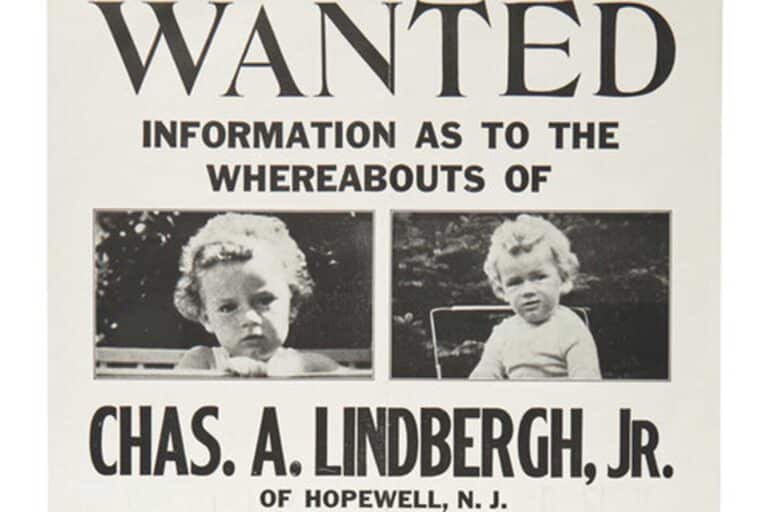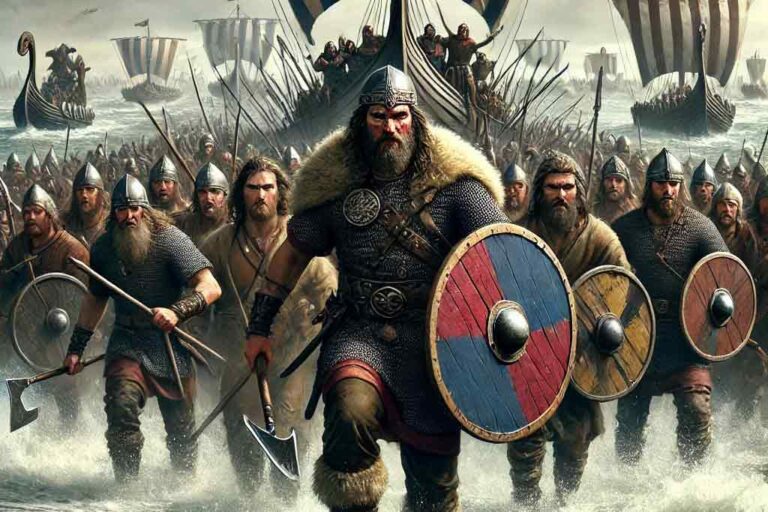Interesting & Mind Blowing History Facts
Diving into the realm of history facts often leads to a treasure trove of astonishing and mind-blowing details that shed light on our past. History, a vast and intricate tapestry, is rife with events, personalities, and moments that challenge our perceptions and broaden our understanding of the world. From ancient civilizations’ incredible achievements to unexpected twists in more recent events, this article will embark on a thrilling journey through time. We’ll uncover little-known historical nuggets, explore the lesser-told stories behind major events, and unravel the mysteries that have captivated historians and enthusiasts alike. Get ready to have your mind blown by the intriguing and often surprising facts that make up the rich and diverse narrative of human history.
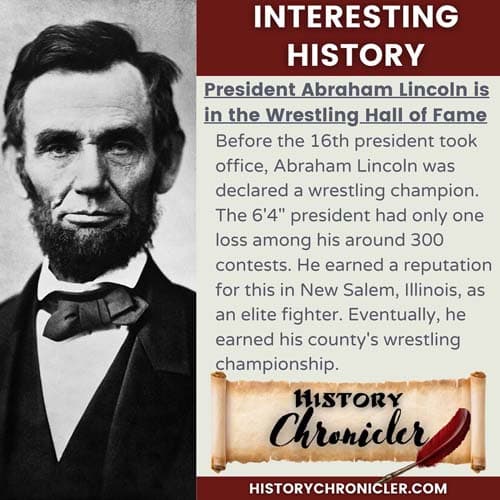
Abraham Lincoln, the 16th President of the United States, had an unexpected chapter in his early life as an accomplished wrestler. Long before his presidential days, Lincoln was known for his impressive physical strength and wrestling prowess in New Salem, Illinois. Standing at an imposing 6 feet 4 inches tall, his long limbs and formidable reach made him a formidable opponent in the wrestling ring. He is famously known to have been defeated only once in about 300 matches, securing his reputation as a legendary local wrestler. His wrestling career, although a lesser-known aspect of his life, exemplified his competitive spirit and physical capabilities. Lincoln’s wrestling talents even earned him an “Outstanding American” honor in the National Wrestling Hall of Fame, highlighting a unique facet of this revered historical figure’s life.

The macuahuitl, a distinctive weapon of the Aztec warriors, was a fearsome and highly effective tool in combat, renowned for its unique construction and lethal capability. This weapon, often likened to a sword or club, was made from a sturdy wooden shaft embedded with razor-sharp obsidian blades along its edges. The obsidian, a volcanic glass found abundantly in Mesoamerica, was capable of producing an edge as sharp as a modern steel razor blade. The macuahuitl’s design allowed for both slashing and bludgeoning actions, making it a versatile weapon in the hands of skilled Aztec warriors. It was feared and respected by their enemies, including the Spanish conquistadors, who documented encounters with these formidable weapons. The macuahuitl stands as a testament to the ingenuity and martial prowess of the Aztec civilization, showcasing their ability to turn natural resources into powerful tools of warfare.

In 1945, a remarkable yet tragic event unfolded in Oregon, marking the only instance of death caused by enemy action on the American mainland during World War II. A Japanese balloon bomb, part of Japan’s Fu-Go project, descended upon Oregon’s forests. These balloon bombs were an ingenious yet desperate attempt by Japan to target the United States. They were designed to float across the Pacific Ocean, carried by the jet stream, and drop explosives on American soil. The balloon that landed in Oregon tragically claimed the lives of a woman and five children who discovered it during a picnic, unaware of its lethal nature. This incident stands as a somber reminder of the far-reaching impacts of warfare and the unforeseen consequences of employing innovative but untested weapons in conflict. The Japanese balloon bomb in Oregon is a relatively obscure but significant footnote in the history of World War II, demonstrating the unpredictable and often tragic nature of war.

The American Civil War, a defining event in the nation’s history, has the unique distinction of having both started and ended on the property of Wilmer McLean. The war’s beginning in 1861 was marked by the First Battle of Bull Run, which took place on McLean’s farm in Manassas, Virginia. This battle set the stage for the bloody conflict that would ensue over the next four years. In a twist of fate, the war effectively came to a close in 1865 at McLean’s new home in Appomattox Court House, Virginia. It was in his parlor that General Robert E. Lee surrendered to General Ulysses S. Grant, signaling the end of the Civil War. McLean is famously quoted as saying, “The war began in my front yard and ended in my front parlor,” highlighting the extraordinary coincidence that bookended his involvement in this pivotal chapter of American history. His properties inadvertently became historical landmarks, framing the narrative arc of the Civil War from its inception to its conclusion.

On January 15, 1919, Boston experienced one of the most bizarre and tragic incidents in its history – the Great Molasses Flood. In the city’s North End, a massive storage tank containing over 2 million gallons of molasses burst, unleashing a towering wave of thick syrup that traveled at approximately 35 miles per hour. The flood devastated the area, engulfing streets, damaging buildings, and overturning vehicles. The torrent of molasses trapped and drowned 21 people and injured over 150, creating a chaotic and nightmarish scene. The disaster was attributed to the failure of the tank, built hastily and inadequately to meet the growing demand for molasses, often used in munitions manufacturing during World War I. The Great Molasses Flood remains a unique and tragic event in Boston’s history, serving as a stark reminder of the importance of industrial safety and the unpredictable nature of such disasters.

China’s long and tumultuous history is marked by warfare and conflict, with the nation having been a central stage for seven of the ten deadliest wars in human history. This includes the Three Kingdoms War, the Qing dynasty’s conquest of the Ming dynasty, and the Taiping Rebellion – one of the most catastrophic civil wars ever, resulting in millions of fatalities. These conflicts, often driven by power struggles, territorial expansions, and internal upheavals, spanned across various dynasties and eras, profoundly shaping the course of Chinese history. The scale and impact of these wars were not only a reflection of the vastness of China’s geography and the size of its population but also of the intense societal and political transformations the nation underwent. These wars left indelible marks on China’s cultural and historical landscape, influencing its path to becoming the nation it is today.

Billy the Kid, one of the most iconic figures of the American Old West, known for his reputation as a notorious outlaw, was actually born far from the dusty plains and gun-slinging lore of the frontier. His beginnings trace back to New York City, where he was born as Henry McCarty in 1859. This revelation about his birthplace adds a surprising twist to the traditional narrative of his life. It suggests a dramatic transition from the urban landscape of the East Coast to the lawless frontiers of the West. Billy’s early years in New York City remain shrouded in mystery, but his move to the West, where he later became known as William H. Bonney, set the stage for his infamous career as a gunslinger and outlaw. His journey from the bustling streets of New York to the rugged territories of New Mexico encapsulates a quintessential tale of transformation during the era of westward expansion in the United States.

The University of Oxford, a venerable institution steeped in academic tradition, astonishingly predates the Aztec Empire, one of the most well-known pre-Columbian civilizations in the Americas. Established in the 12th century, Oxford is recognized as the oldest university in the English-speaking world, with teaching occurring there as early as 1096. This timeline places its inception several centuries before the rise of the Aztecs, who began to build their influential empire in the early 13th century. While the Aztec Empire is renowned for its advanced architectural and cultural achievements in what is now Mexico, Oxford was already an established center of learning in Europe, influencing educational practices and scholarship. This comparison between Oxford and the Aztecs highlights not only the vast historical and cultural differences between the two but also underscores the rich and diverse development of human civilizations across different parts of the world.

Iceland boasts the distinction of having the Althing, the longest continuously running parliament in current history, a testament to its rich democratic heritage. Established in 930 AD at Thingvellir, the Althing has been the cornerstone of Icelandic governance for over a millennium, surviving through various forms of political upheaval and changes in governance. Originally an open-air assembly held by the early Icelandic settlers, the Althing symbolized a significant advancement in governance and law, providing a forum for leaders to discuss legal matters, settle disputes, and make key decisions for the community. This tradition of communal decision-making set a precedent for democratic practices, evolving over the centuries to adapt to Iceland’s changing political landscape. The Althing’s endurance through time is not just a historical curiosity but a reflection of Iceland’s deep-rooted commitment to democratic principles and its ability to adapt and sustain these values through the ages.

Mansa Musa, who reigned from 1312 to 1337, is often considered the richest person in history. As the emperor of the wealthy West African Mali Empire, which encompassed territories including modern-day Mali, Senegal, Gambia, Guinea, Niger, Nigeria, Chad, Mauritania, and Burkina Faso, his wealth was so immense that his lavish pilgrimage to Mecca in 1324 reportedly disrupted the economy of the regions through which he traveled due to the vast amount of gold he distributed.
How Potatoes Became Popular in France… Thanks to a Clever Trick!

Believe it or not, potatoes were once considered unfit for human consumption in France—thought to be only good for livestock and difficult to digest. But pharmacist Antoine-Augustin Parmentier knew better. Determined to change public perception, he devised a brilliant plan.
He planted potatoes on a two-acre farm and surrounded it with armed guards, making people believe something incredibly valuable was growing there. Naturally, curiosity got the best of them, and people began stealing the crop—just as Parmentier had hoped! To seal the deal, he even instructed his guards to accept bribes and let the thieves get away.
The result? Potatoes quickly became a staple of the French working class! A little marketing genius can go a long way.

British poet and statesman Lord Byron, during his time at Cambridge, housed a pet bear in his dorm room. As a fervent animal enthusiast, Byron was initially disheartened to learn that dogs were not permitted on campus. Undeterred, he opted for a domesticated bear as his companion instead. Remarkably, he was often seen strolling the campus grounds with the bear on a leash.
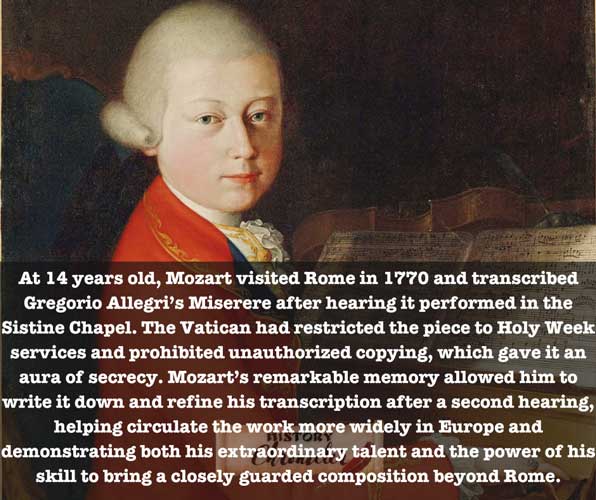
In 1770, 14-year-old Wolfgang Amadeus Mozart visited Rome with his father and attended Holy Week services in the Sistine Chapel. There he heard Gregorio Allegri’s Miserere, a piece reserved exclusively for the papal chapel since the early 1600s. Copying it was forbidden, adding to its secrecy and prestige. Relying on his remarkable memory, Mozart transcribed the work after hearing it once, refining it after a second hearing. His version spread quickly through Europe, weakening the Vatican’s monopoly on the music. Mozart’s transcription ensured the Miserere became widely known and celebrated beyond Rome.
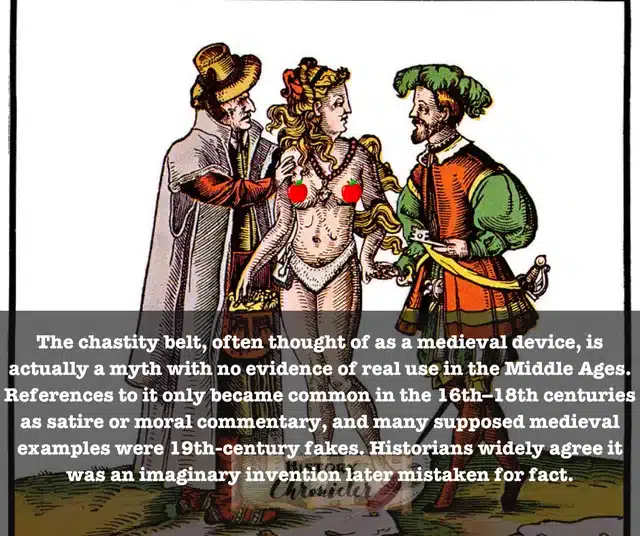
The image of the medieval chastity belt has long captured the popular imagination, but historians now agree it was never a real or widespread practice during the Middle Ages. No credible evidence exists to suggest that women were forced to wear such devices to guard their virtue while husbands went to war or on pilgrimage. Instead, the notion of the chastity belt emerged centuries later, fueled by Renaissance satire and Enlightenment humor. By presenting the belt as a bizarre and extreme symbol of control, writers and artists of the time poked fun at ideas of fidelity, morality, and human folly rather than documenting an actual practice.
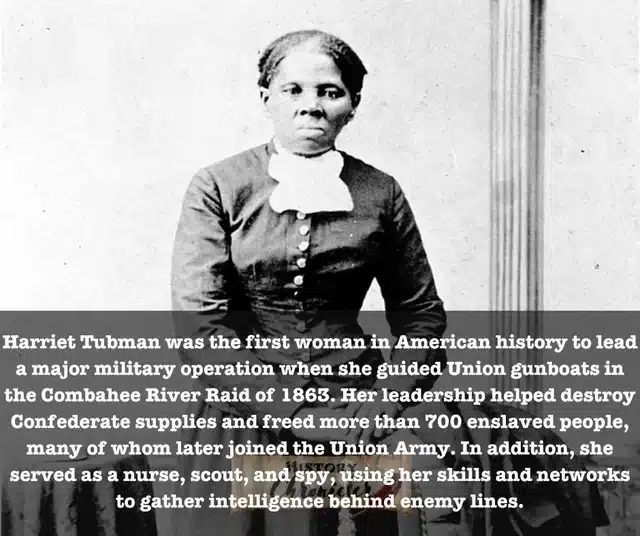
During the Civil War, Harriet Tubman made history again by becoming the first woman to lead a significant military operation for the United States. On June 2, 1863, she directed a group of Union gunboats up the Combahee River in South Carolina, in a joint operation with Colonel James Montgomery. Tubman’s expertise in the area and her connections with the local Underground Railroad network allowed the Union forces to avoid Confederate mines and execute a surprise attack that freed plantations, supplies, and transportation infrastructure that were supporting the Confederacy. This mission demonstrated Tubman’s bravery and strategic abilities, and it further enhanced her already legendary status.
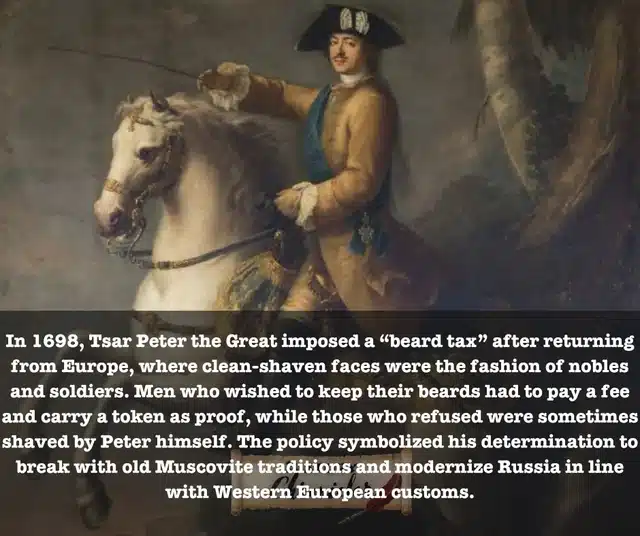
Peter’s beard tax was introduced in 1698. On his visit to Western Europe, Peter became enchanted by the fashion of clean-shaven noblemen and military officers and wanted to make it a universal practice in Russia. Eager to eliminate the “backward” appearance of his bearded subjects, Peter ordered men to either pay a tax and purchase a special token as proof of payment in order to continue to wear beards, or be forcibly shaved by Peter himself. Peter shocked and humiliated opponents of this decree by cutting off the beards of those who opposed the law right in front of them.

King Charles VI of France, remembered as “Charles the Mad,” famously believed his body was made of fragile glass and could shatter with the slightest touch. He sometimes wrapped himself in reinforced clothing or refused to move suddenly, terrified of breaking apart. This peculiar condition, known as the “glass delusion,” was not unique to him—other royals, such as Princess Alexandra Amelie of Bavaria, believed they had swallowed or were made of glass objects. The phenomenon, once relatively common among Europe’s elite, illustrates how mental illness intertwined with power and shaped the stability of monarchies.

In 1903, the elephant Topsy was publicly electrocuted at Coney Island in a grim spectacle tied to the “War of Currents” between Thomas Edison and Nikola Tesla. Edison sought to portray alternating current as dangerously lethal, using Topsy’s death as propaganda. Today, the event is remembered less as a scientific demonstration and more as a chilling example of how rivalry and entertainment exploited both animals and technology.
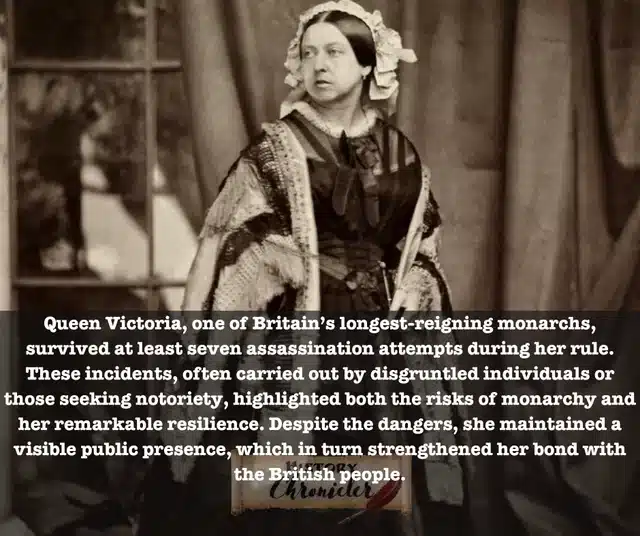
Queen Victoria, one of Britain’s longest-reigning monarchs, survived at least seven assassination attempts during her rule. These incidents, often carried out by disgruntled individuals or those seeking notoriety, highlighted both the risks of monarchy and her remarkable resilience. Despite the dangers, she maintained a visible public presence, which in turn strengthened her bond with the British people.
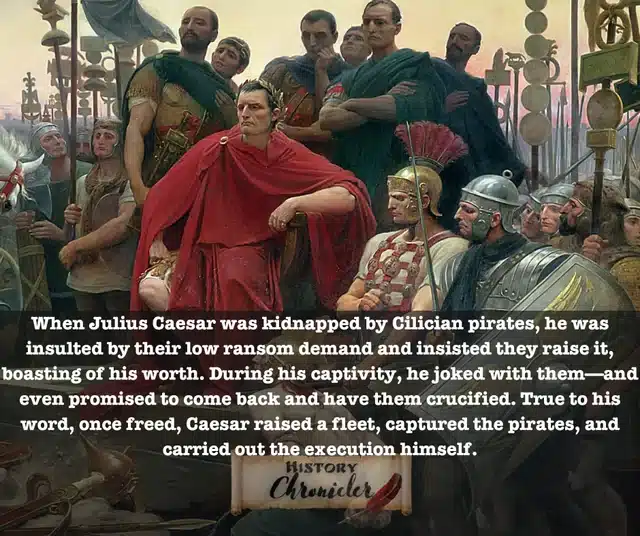
In 75 BCE, a young Julius Caesar was sailing across the Aegean Sea when Cilician pirates captured him. These known marauders regularly ransomed wealthy Romans. Upon learning they intended to demand 20 talents of silver for his release, Caesar scoffed at the sum and insisted they ask for 50, declaring that he was worth far more. During his 38-day captivity, Caesar maintained a curious dominance over his captors: he treated them more like subordinates than kidnappers, demanding they stay quiet while he slept and even reciting poetry and speeches for their critique. Despite the apparent camaraderie, he warned them… half-joking, they thought—that once ransomed, he would return to punish them for daring to abduct him.
The moment Caesar was released, he sprang into action. He secured a small naval force from the nearby city of Miletus, tracked down the pirates to their hideout, and swiftly captured them. True to his word, Caesar had them all crucified along the coast of Asia Minor, though in a gesture of “mercy,” he first ordered their throats slit to lessen their suffering. This bold episode not only revealed Caesar’s ruthlessness and charisma but also foreshadowed the iron will and strategic mind that would later reshape the Roman Republic. It was one of the first dramatic moments in a life filled with audacity—and it earned him a growing reputation in Rome as a man not to be underestimated.
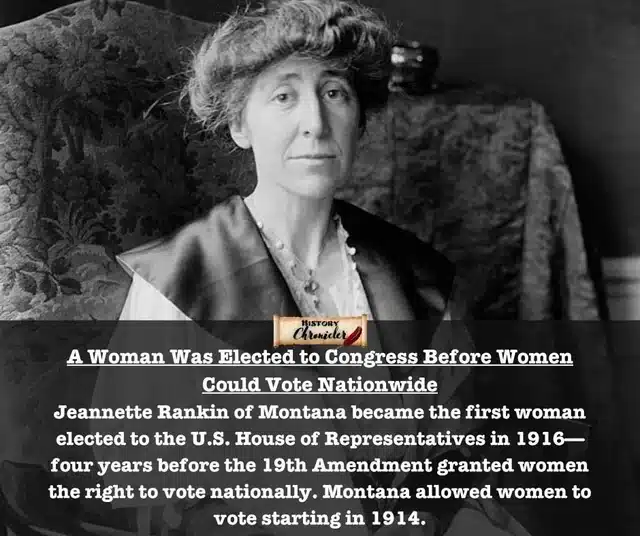
In 1916, Jeannette Rankin of Montana made history as the first woman elected to the U.S. House of Representatives—four years before the 19th Amendment gave women the right to vote across the country.
Montana had granted women voting rights in 1914, paving the way for this groundbreaking moment.
Jeannette didn’t just break a glass ceiling—she charged through it.
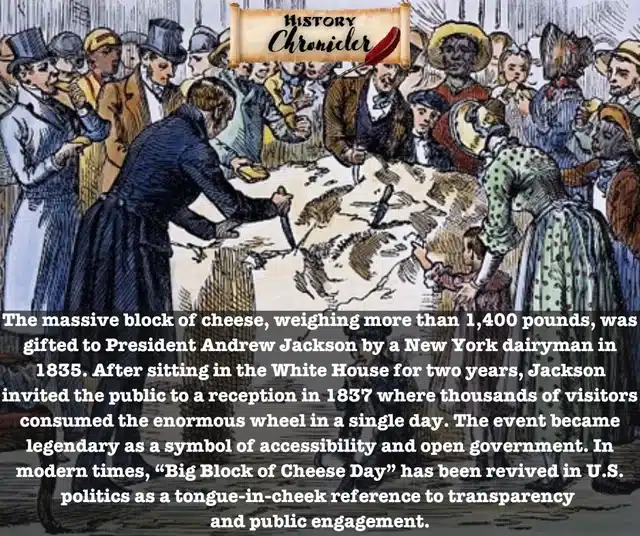
In 1835, a New York dairyman gifted President Andrew Jackson a colossal 1,400-pound block of cheese, so big it took two years before it was finally served. In 1837, Jackson threw open the doors of the White House and invited the public to dig in—thousands of visitors swarmed in and consumed the entire wheel in a single day.
The event quickly took on symbolic meaning, remembered as a moment when the government was opened to the people. Today, “Big Block of Cheese Day” has been humorously revived in U.S. politics and pop culture (yes, even The West Wing) as a nod to transparency, accessibility, and the idea that no question is too small for democracy.

Developed in the 1850s by British engineer Sir Joseph Whitworth, it was the first true sniper rifle. The Whitworth featured a hexagonal bore and custom bullets that could hit targets from 2,000 yards away. Confederate sharpshooters used it to take out Union officers and artillery crews with deadly precision, long before the word “sniper” became mainstream.
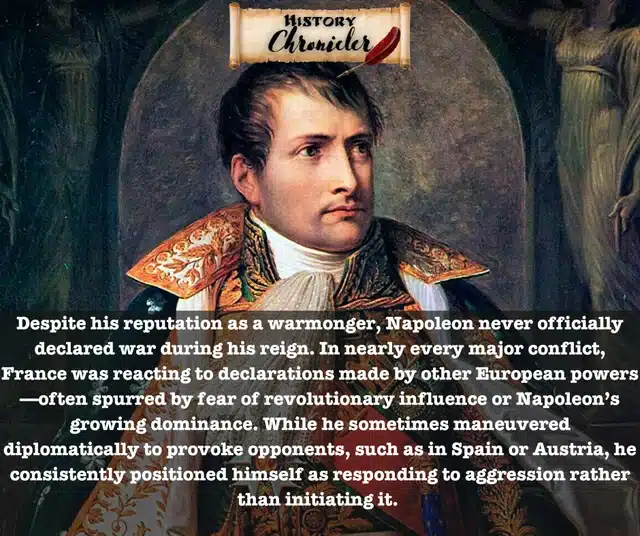
Despite his reputation as a warmonger, Napoleon never officially declared war during his reign. In nearly every major conflict, France was reacting to declarations made by other European powers—often spurred by fear of revolutionary influence or Napoleon’s growing dominance. While he sometimes maneuvered diplomatically to provoke opponents, such as in Spain or Austria, he consistently positioned himself as responding to aggression rather than initiating it. Egypt was launched under the French Directorate, the Russian campaign followed Alexander’s breach of the Treaty of Tilsit, and Napoleon entered Spain at the monarch’s own request—complicating the narrative of unprovoked conquest.

Amid the chaos of World War I, a fearless woman disguised herself in a soldier’s uniform, hiding her true identity to fight alongside men on the front lines. This is the extraordinary story of Marie Marvingt, a woman whose boldness and determination defied every expectation.
Born in 1875, Marvingt broke barriers in sports, mountain climbing, and journalism—but her most lasting legacy was in aviation and medicine. As early as 1910, long before airplanes were used in war, she proposed converting fixed-wing aircraft into air ambulances and even worked on a prototype with engineer Louis Béchereau.
When war erupted, her fierce patriotism drove her to pose as a man to enlist in combat, risking everything to serve her country. She later became one of the first women to fly in combat missions, earning the Croix de Guerre after bombing a German base in Metz.
Following the war, Marvingt devoted her life to developing air medical services. She organized the first international conference on medical aviation in 1929 and went on to found a civilian air ambulance program in Morocco. In 1934, she became the world’s first certified flight nurse.
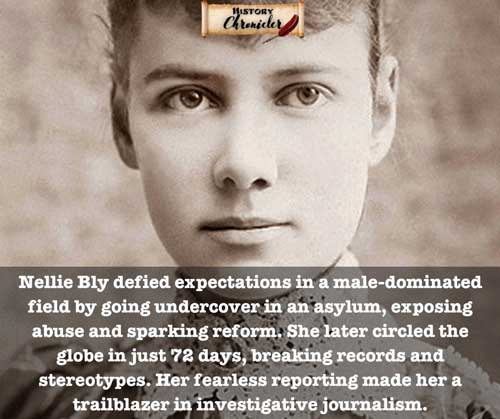
Nellie Bly was more than a journalist—she was a force of change. At a time when women were often dismissed in the newsroom, she went undercover in an asylum to expose abuse, sparking reforms in mental health care. She later shattered expectations again by circling the globe in just 72 days, proving determination could defy both stereotypes and limits. Her fearless reporting and groundbreaking spirit continue to inspire generations of truth-seekers and trailblazers.
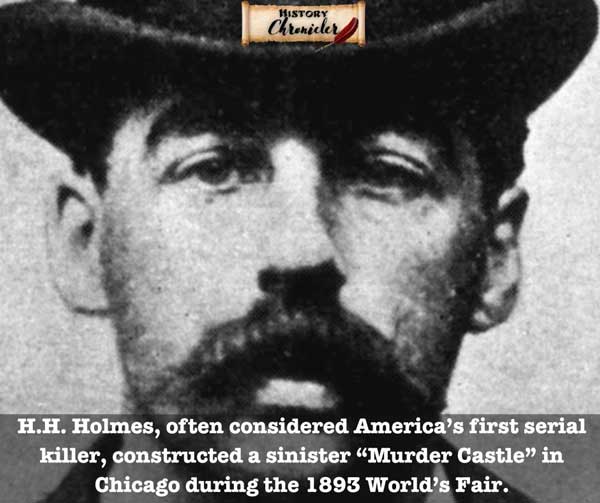
H.H. Holmes, often regarded as America’s first serial killer, left a chilling mark on history during the 1893 Chicago World’s Fair. Using the event as a backdrop, Holmes constructed what became infamously known as the “Murder Castle,” a three-story building masquerading as a hotel.
Inside, he designed a labyrinth of hidden passageways, trap doors, soundproof rooms, and even a crematorium to carry out his gruesome crimes. Visitors drawn to Chicago for the grand exposition unknowingly stepped into his carefully orchestrated trap.
Holmes’s calculated manipulation and architectural horrors turned the World’s Fair into the hunting ground for one of the most notorious killers in American history, cementing his place in true crime lore.

Often called the “female Paul Revere,” Sybil Ludington showed remarkable bravery during the Revolutionary War. On the stormy night of April 26, 1777, she rode nearly 40 miles through rain and darkness to rally colonial militias against an impending British attack. Just 16 years old, she covered almost twice the distance of Revere’s more famous ride, proving that courage knows no age or gender. Her fearless act of patriotism secured her place as a true unsung hero of America’s fight for independence.

Resistance with a twist of brilliance: When German forces occupied Paris in 1940, French troops cut the Eiffel Tower’s elevator cables—forcing Nazis to climb it by foot if they wanted to raise their flag. A small but defiant act of sabotage that spoke volumes.
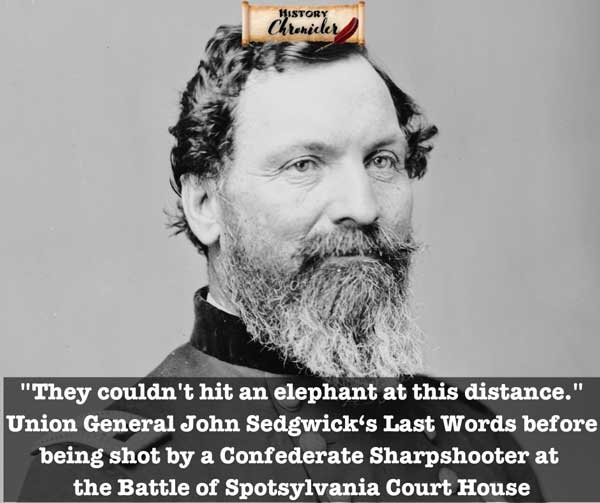
The ironic and tragic last words of Union General John Sedgwick. Before his death at the Battle of Spotsylvania Court House, Sedgwick remarked, “They couldn’t hit an elephant at this distance.” Tragically, he was then struck down by a Confederate sniper.
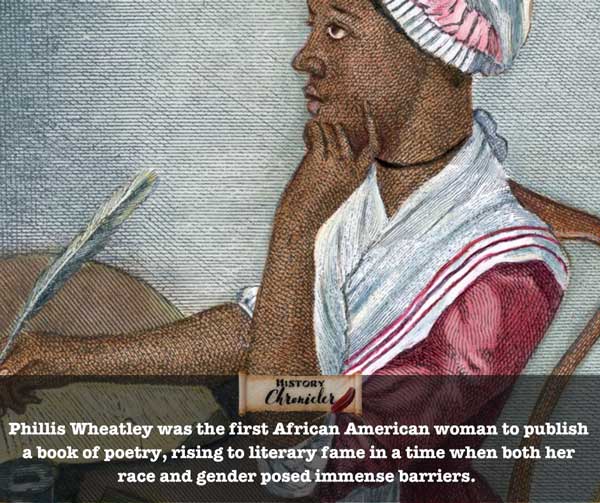
The ironic and tragic last words of Union General John Sedgwick. Before his death at the Battle of Spotsylvania Court House, Sedgwick remarked, “They couldn’t hit an elephant at this distance.” Tragically, he was then struck down by a Confederate sniper.

Hildegard of Bingen was one of the most extraordinary minds of the Middle Ages. As an abbess, composer, scientist, and visionary, she defied the limits placed on women in her time. Her bold writings blended theology, medicine, and music, while her mystical visions gave her a voice that reached popes, emperors, and scholars alike. Centuries before modern science, she explored natural remedies, cosmology, and the power of the human spirit, leaving a legacy that still resonates today.
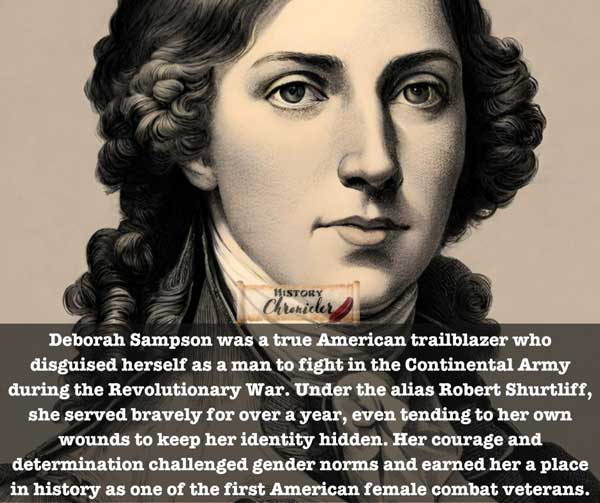
Deborah Sampson’s story is one of courage and defiance in the face of convention. Disguising herself as a man under the name Robert Shurtliff, she fought in the Continental Army during the Revolutionary War—risking everything to serve her country. For over a year she endured the hardships of battle, even secretly treating her own wounds to protect her identity. Her determination not only challenged gender roles of the 18th century but also secured her place in history as one of America’s first female combat veterans.

Vladimir Pravik was among the first responders to the Chornobyl disaster. Unfortunately, his fate was sealed before he had any clue what he was dealing with.

John “Mad Jack” Churchill was a British officer in World War Two. He’s famous because he brought along a Scottish claymore, bagpipes, and a bow and got the “only confirmed longbow kill of the Second World War.”
One time he was with part of his commando unit and a shell exploded and injured everyone but him, so he played a Scottish Jacobite song on his bagpipes until the Germans captured him and sent him to a prison camp. He promptly escaped via a tunnel he dug and almost got to the ocean before he got recaptured.
By then, it was April 1945, and the German military was falling apart, so they let him go soon pretty quickly. He’s famous for the quote “any officer who goes into action without his sword is improperly dressed
